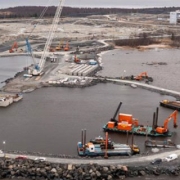The UK’s leading manufacturer of offsite, panelised ‘room in roof’ systems Smartroof is delighted to announce some key appointments within its rapidly expanding UK team with Tom Wright as Design and Technical Director, Jamie Bremner as Head of Contracts and Matthew Horwood as Contracts Manager. Tom brings 8 years experience in panelised roofs and Jamie has 5 years behind him.
Tom Wright, Jamie Bremner and Matthew Horwood have taken up their new positions following the busiest 12 months in the company’s history. The promotions demonstrate Smartroof’s continued commitment to support and invest in its people and expertise as it continues its growing presence across the UK.
Commenting on Tom’s appointment, Ian Dean, Operations Director at Smartroof said: “Tom has been a very steady hand on the tiller of our design department for 16 months now. During this very challenging period he has seen a whole host of changes to both our design infrastructure and personnel, ensuring we remain in a comfortable position throughout these transitions. He has also willingly taken on various other responsibilities such as championing our sustainability pledge.”
On Jamie Bremner’s promotion to Head of Contracts, Ian Dean said “Jamie has been a Senior Contracts Manager within our Contracts department for 16 months and during this time he has fulfilled his day-to-day duties whilst managing other senior manager responsibilities, such as the recruiting and training of new recruits. This change of title is intended to properly reflect on these duties and provide structure and clarity to Jamie’s role and standing within the Contracts Department.”
The final promotion sees Matthew Horwood taking up the role of Contracts Manager
having joined the company 13 months ago as contracts supervisor within the Contracts Department.
Jamie Bremner, Head of Contracts at Smartroof said “In the last year, Matthew has continued to show great aptitude in the role, completing both his SMSTS and CPCS appointed person training while gaining the necessary experience to step up to his new position.”
“These promotions are tremendous news for our business and our clients. I would like to congratulate all three on a deserved recognition of their invaluable contribution to the business’s success,” added Ian Dean.
To find out more download the Smartroof brochure or contact info@smartroof.co.uk











